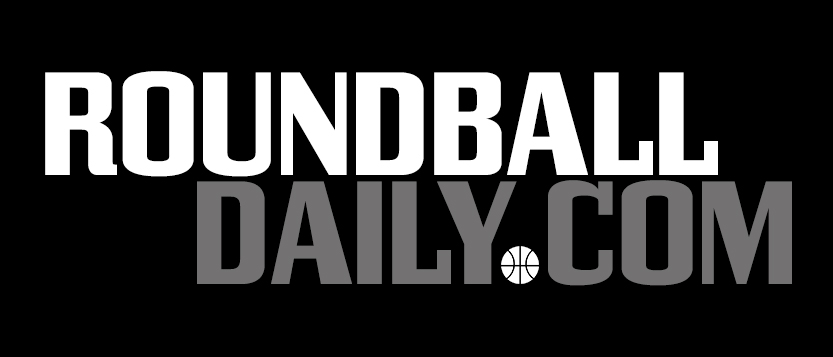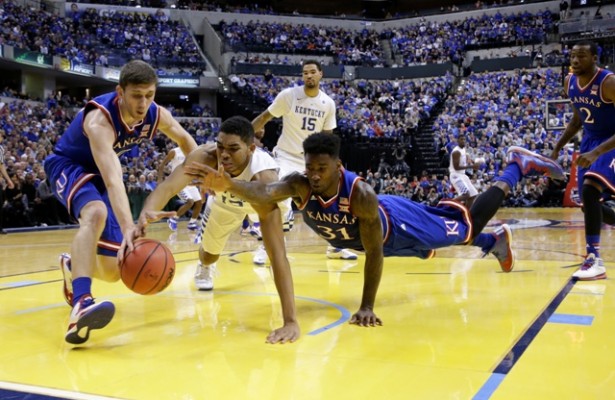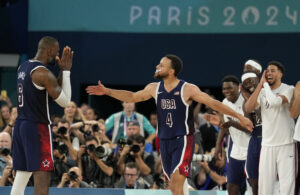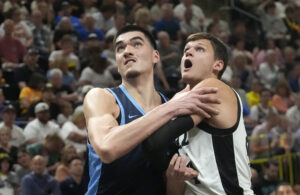- Attacking style not the only reason some Tottenham fans will back Ange Postecoglou until the bitter endPosted 4 months ago
- Paris Olympics takeaways: What did Team USA’s crunch-time lineup say about NBA’s hierarchy?Posted 10 months ago
- Zach Edey posted an easy double-double in Summer League debut. Here’s why he’ll succeed in NBAPosted 11 months ago
- What will we most remember these champion Boston Celtics for?Posted 11 months ago
- After long, seven-year road filled with excruciating losses, Celtics’ coast to NBA title felt ‘surreal’Posted 11 months ago
- South Florida men’s basketball is on an unbelievable heater– but also still on the bubblePosted 1 year ago
- Kobe Bufkin is balling out for Atlanta Hawks’ G League team. When will he be called up to NBA?Posted 1 year ago
- Former Knicks guards Immanuel Quickley, RJ Barrett may yet prove Raptors won the OG Anunoby tradePosted 1 year ago
- Rebounding savant Oscar Tshiebwe finally gets NBA chance he’s deserved for yearsPosted 1 year ago
- Is Tyrese Maxey vs. Tyrese Haliburton the next great NBA guard rivalry?Posted 2 years ago
Why the one-and-done rule is killing college basketball
- Updated: December 17, 2014
AP Photo
By: Kels Dayton
When Jack Montague’s shot ripped through the net at Gampel Pavilion earlier this month, and Ivy League also-ran Yale knocked off defending national champion UConn, 45-44, an increasingly familiar shockwave rippled through the college basketball universe.
Yale’s 45-44 upset of UConn says a lot about the Huskies, and the college hoops landscape itself.(AP Photo/Fred Beckham)
Yale grads pumped their fists at their desks inside Fortune 500 companies. UConn haters wailed in delight.
It was the biggest win in Bulldogs basketball history.
But it wasn’t even the biggest upset of the week.
Turn on a game any night these days, and there’s a good chance you’ll see a team you’ve never heard of going bucket-for-bucket with a school that has a 60,000 seat football stadium. Incarnate Word, a D-1 program for all of one year, beat Nebraska, an NCAA Tournament team from a year ago that returned its best player. Columbia hung with No. 1 Kentucky. New Jersey Institute of Technology won at then-No. 17 Michigan.
It’s not that these types of upsets aren’t great for college basketball–it’s just, well, there’s a reason why these types of upsets are becoming more and more common. And it’s the same reason that No. 2 Wisconsin can beat Marquette, 49-38, in a horrifically ugly game, Kentucky can dominate Kansas, 72-40, and UConn can put up 44 points at home against Yale without anyone batting an eye.
The one-and-done rule has changed college basketball’s landscape, and it’s actually killing the product on the floor.
Not only is the NBA’s age-limit rule, which was implemented in 2006, unfair to the Andrew Wiggins, Jabari Parkers, and Julius Randles of the world, who have to wait a year to cash in on their multi-million dollar talents and risk injuring themselves while performing a year of indentured servitude in college, but it’s unfair to fans, who now have to watch a diluted product.
Sure, fans get to watch future NBA stars play in college arenas for five months, and sure, they’re able to learn who these guys are before they shuffle off to the League, where maybe one day they’ll become household names with Sprite commercials.
But they also have to watch pimple-faced underclassmen, still wet behind the ears, chucking up airballs, going 1-on-3 on fast breaks and leading UConn in scoring with 14 points in their loss to Yale.

High-major teams have been overtaken by 18-to-20 year-olds, and although many of them have a lot of talent, they’re not anywhere close to being finished products. There used to be a saying in college sports that the best thing about a freshman was that eventually he becomes a sophomore. But now, being a sophomore at a big-time school is almost embarrassing–like, you weren’t good enough to get to the league as a freshman? What’s wrong with you?
Imagine being a senior at Kentucky, where the roster turns over every year and a new batch of McDonald’s All-Americans comes in and dominates the playing time. Twins Andrew and Aaron Harrison are sophomores, but they feel like seniors because they didn’t bolt into and out of our consciousness like so many other Wildcats. Kentucky’s seniors aren’t starters. They’re walk-ons.
Kentucky might go 40-0 this season. They may not have a team come within single digits of them. But even if that happens, the Wildcats won’t be one of the greatest college basketball teams of all time. They wouldn’t stand a chance against 1990 UNLV, 1972 Indiana, or 1984 Georgetown. They’d probably lose to ’99 UConn.
It’s not because they’re not talented–it’s because they’re teenagers. And that’s why some of these upsets have taken place. When boys (even talented ones) go up against 22 and 23-year-old men, it can be a recipe for disaster.
It wasn’t always like this–and I’m not talking about the days when Patrick Ewing played as a four-year senior.
Even back in the early 2000’s, high-major teams like Kansas, Maryland and UConn had upperclassmen who knew how to play and therefore, made games fun to watch. Most of them didn’t turn into stars (David West was the National Player of the Year in 2003, Emeka Okafor and Jameer Nelson in 2004), but they were good college basketball players. There were no 44-38 games, no home losses to NJIT, and no freshman-dominated starting lineups.
For basketball fans who hate the way the NBA game is played (and there are a ton of them), the college game was a hoops heaven. It was fun to watch, the games were meaningful, and the upsets were rare enough that they were actually special when they happened. We’ve lost that now.
So here’s a thought for the higher-ups in the NBA who instituted the one-and-done:
You’ve already messed up professional basketball.
Don’t kill college too.





